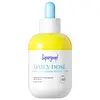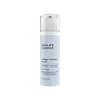What's inside
What's inside
 Key Ingredients
Key Ingredients

 Benefits
Benefits

 Concerns
Concerns

 Ingredients Side-by-side
Ingredients Side-by-side

Butyl Methoxydibenzoylmethane 2%
UV AbsorberHomosalate 9%
Skin ConditioningEthylhexyl Salicylate 5%
UV AbsorberOctocrylene 10%
UV AbsorberCaprylic/Capric Triglyceride
MaskingC12-15 Alkyl Benzoate
AntimicrobialDicaprylyl Ether
EmollientButyloctyl Salicylate
Skin ConditioningPolybutene
Ethyl Olivate
EmollientRosa Canina Seed Oil
EmollientJojoba Oil/Macadamia Seed Oil Esters
Skin ConditioningHydrogenated Polycyclopentadiene
Squalane
EmollientGlycine Soja Oil
EmollientSimmondsia Chinensis Seed Oil
EmollientSqualene
EmollientPolyglyceryl-3 Diisostearate
EmulsifyingTocopherol
AntioxidantOryza Sativa Extract
AbsorbentOryza Sativa Germ Extract
EmollientAvena Sativa Kernel Oil
Skin ConditioningPhytosteryl Macadamiate
Skin ConditioningCeramide NP
Skin ConditioningOlea Europaea Leaf Extract
PerfumingBacillus Ferment
Skin ConditioningPhytosterols
Skin ConditioningRicinus Communis Seed Oil
MaskingSodium Hyaluronate
HumectantHelianthus Annuus Seed Wax
Skin ConditioningButyl Methoxydibenzoylmethane 2%, Homosalate 9%, Ethylhexyl Salicylate 5%, Octocrylene 10%, Caprylic/Capric Triglyceride, C12-15 Alkyl Benzoate, Dicaprylyl Ether, Butyloctyl Salicylate, Polybutene, Ethyl Olivate, Rosa Canina Seed Oil, Jojoba Oil/Macadamia Seed Oil Esters, Hydrogenated Polycyclopentadiene, Squalane, Glycine Soja Oil, Simmondsia Chinensis Seed Oil, Squalene, Polyglyceryl-3 Diisostearate, Tocopherol, Oryza Sativa Extract, Oryza Sativa Germ Extract, Avena Sativa Kernel Oil, Phytosteryl Macadamiate, Ceramide NP, Olea Europaea Leaf Extract, Bacillus Ferment, Phytosterols, Ricinus Communis Seed Oil, Sodium Hyaluronate, Helianthus Annuus Seed Wax
Water
Skin ConditioningGlycerin
HumectantDiheptyl Succinate
EmollientCandelilla/Jojoba/Rice Bran Polyglyceryl-3 Esters
EmulsifyingLinum Usitatissimum Seed Oil
PerfumingLinoleic Acid
CleansingLinolenic Acid
CleansingPassiflora Edulis Seed Oil
EmollientCeramide EOP
Skin ConditioningCeramide Eos
Skin ConditioningCeramide NP
Skin ConditioningCeramide Ns
Skin ConditioningCaprooyl Sphingosine
Skin ConditioningOlea Europaea Oil Unsaponifiables
Skin ConditioningCaprooyl Phytosphingosine
Skin ConditioningSodium Hyaluronate
HumectantCholesterol
EmollientCeramide AP
Skin ConditioningButyrospermum Parkii Butter Unsaponifiables
Skin ConditioningTocopherol
AntioxidantHydroxyethyl Acrylate/Sodium Acryloyldimethyl Taurate Copolymer
Emulsion StabilisingPrunus Domestica Seed Oil
Skin ConditioningLauryl Laurate
Skin ConditioningGlyceryl Behenate
EmollientHydrogenated Lecithin
EmulsifyingSodium Phytate
Trehalose
HumectantIsohexadecane
EmollientSodium Stearoyl Lactylate
EmulsifyingCapryloyl Glycerin/Sebacic Acid Copolymer
Skin ConditioningXanthan Gum
EmulsifyingCetyl Alcohol
EmollientTetrahexyldecyl Ascorbate
AntioxidantAgar
MaskingGlyceryl Stearate
EmollientCeteareth-25
CleansingCetearyl Alcohol
EmollientBehenic Acid
CleansingGlyceryl Rosinate
PerfumingCitric Acid
BufferingBenzyl Alcohol
PerfumingEthylhexylglycerin
Skin ConditioningWater, Glycerin, Diheptyl Succinate, Candelilla/Jojoba/Rice Bran Polyglyceryl-3 Esters, Linum Usitatissimum Seed Oil, Linoleic Acid, Linolenic Acid, Passiflora Edulis Seed Oil, Ceramide EOP, Ceramide Eos, Ceramide NP, Ceramide Ns, Caprooyl Sphingosine, Olea Europaea Oil Unsaponifiables, Caprooyl Phytosphingosine, Sodium Hyaluronate, Cholesterol, Ceramide AP, Butyrospermum Parkii Butter Unsaponifiables, Tocopherol, Hydroxyethyl Acrylate/Sodium Acryloyldimethyl Taurate Copolymer, Prunus Domestica Seed Oil, Lauryl Laurate, Glyceryl Behenate, Hydrogenated Lecithin, Sodium Phytate, Trehalose, Isohexadecane, Sodium Stearoyl Lactylate, Capryloyl Glycerin/Sebacic Acid Copolymer, Xanthan Gum, Cetyl Alcohol, Tetrahexyldecyl Ascorbate, Agar, Glyceryl Stearate, Ceteareth-25, Cetearyl Alcohol, Behenic Acid, Glyceryl Rosinate, Citric Acid, Benzyl Alcohol, Ethylhexylglycerin
Ingredients Explained
These ingredients are found in both products.
Ingredients higher up in an ingredient list are typically present in a larger amount.
Ceramide NP is a type of ceramide.
Ceramides are intercellular lipids naturally found in our skin that bonds dead skin cells together to create a barrier. They are known for their ability to hold water and thus are a great ingredient for dry skin.
Ceramides are an important building block for our skin barrier. A stronger barrier helps the skin look more firm and hydrated. By bolstering the skin ceramides act as a barrier against irritating ingredients. This can help with inflammation as well.
If you would like to eat ceramides, sweet potatoes contain a small amount.
Read more about other common types of ceramides here:
Ceramide AP
Ceramide EOP
Sodium Hyaluronate is hyaluronic acid's salt form. It is commonly derived from the sodium salt of hyaluronic acid.
Like hyaluronic acid, it is great at holding water and acts as a humectant. This makes it a great skin hydrating ingredient.
Sodium Hyaluronate is naturally occurring in our bodies and is mostly found in eye fluid and joints.
These are some other common types of Hyaluronic Acid:
Learn more about Sodium HyaluronateTocopherol (also known as Vitamin E) is a common antioxidant used to help protect the skin from free-radicals and strengthen the skin barrier. It's also fat soluble - this means our skin is great at absorbing it.
Vitamin E also helps keep your natural skin lipids healthy. Your lipid skin barrier naturally consists of lipids, ceramides, and fatty acids. Vitamin E offers extra protection for your skin’s lipid barrier, keeping your skin healthy and nourished.
Another benefit is a bit of UV protection. Vitamin E helps reduce the damage caused by UVB rays. (It should not replace your sunscreen). Combining it with Vitamin C can decrease sunburned cells and hyperpigmentation after UV exposure.
You might have noticed Vitamin E + C often paired together. This is because it is great at stabilizing Vitamin C. Using the two together helps increase the effectiveness of both ingredients.
There are often claims that Vitamin E can reduce/prevent scarring, but these claims haven't been confirmed by scientific research.
Learn more about Tocopherol